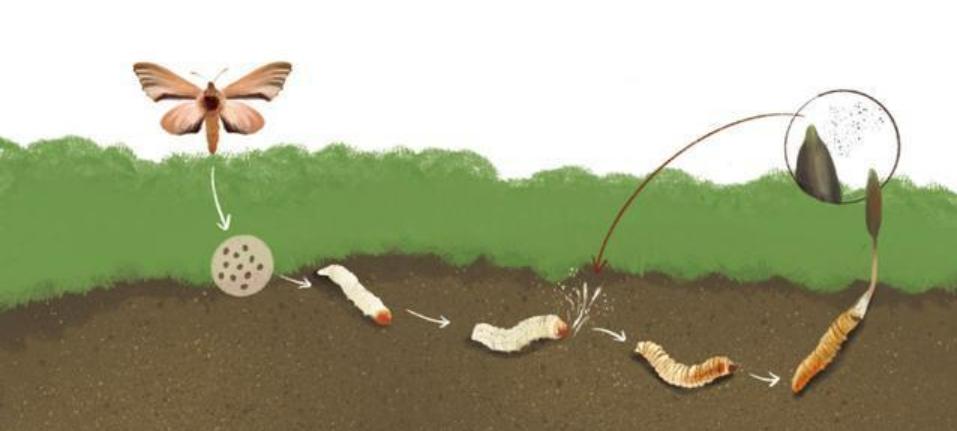Cordyceps sinensis an animal or a plant? Is its medicinal value really that great?
Speaking of Cordyceps sinensis, it has always been a leader in the high-end health product category and is very prestigious. It has the body of a bug and the stem of a plant, seemingly a product of the combination of animals and plants. So, is it considered an animal or a plant? Actually, neither is it. Cordyceps is an animal nor a plant. How can this be explained? Let’s first take a look at how Cordyceps sinensis is formed? In the soil around the Qinghai Tibet Plateau, there is a type of fungus spore called Cordyceps. It will parasitize on the larvae of bat moths, slowly grow inside the larvae, absorb nutrients, until the larvae are completely “squeezed” and die. After the bat moth larvae are digested and killed by cordyceps, their internal tissue shells will combine with hyphae to form a hard mycelium. At this stage, the appearance of the larvae has not undergone significant changes and remains the same as that of the larvae. Generally, this stage occurs in winter, so it is called a winter worm.
Let’s first take a look at how Cordyceps sinensis is formed? In the soil around the Qinghai Tibet Plateau, there is a type of fungus spore called Cordyceps. It will parasitize on the larvae of bat moths, slowly grow inside the larvae, absorb nutrients, until the larvae are completely “squeezed” and die. After the bat moth larvae are digested and killed by cordyceps, their internal tissue shells will combine with hyphae to form a hard mycelium. At this stage, the appearance of the larvae has not undergone significant changes and remains the same as that of the larvae. Generally, this stage occurs in winter, so it is called a winter worm.
 When spring comes next year, the mycelium of fungi begins to gradually grow. The mycelium grows from the head of bat moth larvae and gradually protrudes from the ground. At this time, the appearance of cordyceps leaking soil becomes a stem like shape, similar to that of plants. This stage is usually in summer, so it is called summer grass.
When spring comes next year, the mycelium of fungi begins to gradually grow. The mycelium grows from the head of bat moth larvae and gradually protrudes from the ground. At this time, the appearance of cordyceps leaking soil becomes a stem like shape, similar to that of plants. This stage is usually in summer, so it is called summer grass.
 So, the answer to the question of whether Cordyceps sinensis is an animal or a plant is just around the corner. Simply put, Cordyceps sinensis is a fungal body, while bat moth larvae are the pitiful insects that provide it with nutrients.
So, the answer to the question of whether Cordyceps sinensis is an animal or a plant is just around the corner. Simply put, Cordyceps sinensis is a fungal body, while bat moth larvae are the pitiful insects that provide it with nutrients.
Most people think that Cordyceps sinensis is a rare health supplement that has special effects on human health.






